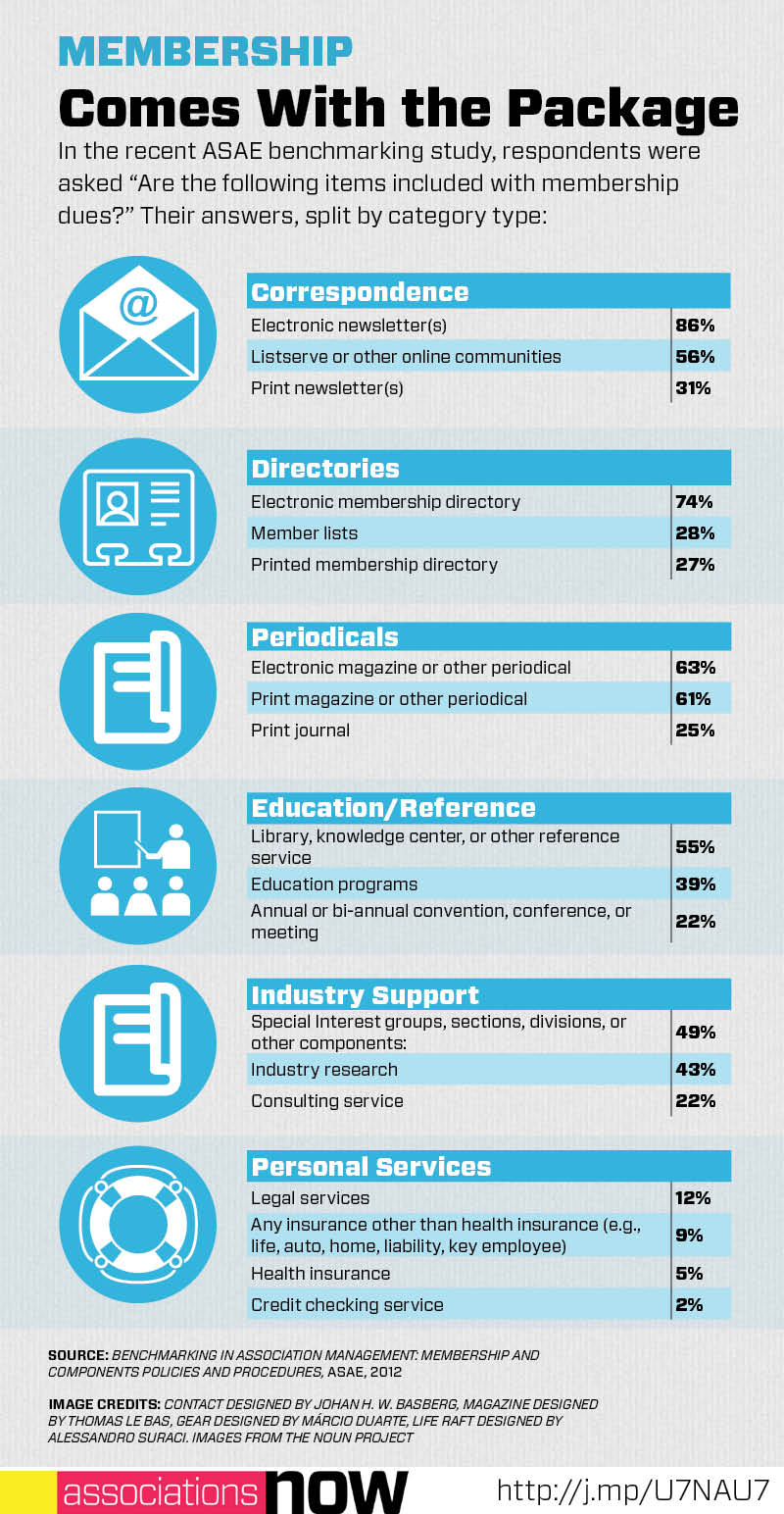
Are There No New Benefits Under the Sun?
Visit any association and you'll see the same core sets of benefits. Is that good or bad?
Is every association unique, or are they all the same? I’ve heard arguments on both sides, and I’ve come to the point where my answer is, well, “both.” I hold these opposite ideas to be equally true.
This different/same question has some implications for both how well our industry can share knowledge and how well it can innovate. It’s been on my mind lately, and if you’ll permit me a bit of Associations Now inside-baseball, I’ll explain why.
A new, regular item in Associations Now is “Best Benefit Ever,” in which we spotlight a benefit at one association and why it’s valuable, in the words of a member of that association. When the idea arose during our mid-summer planning for the magazine relaunch, we expected to tap into the great diversity of industries and professions represented by associations. Surely we would find all sorts of unique, quirky—and even, perhaps, innovative—benefits that associations offer. The logic was simple: benefits that appeal to boating enthusiasts, for instance, would be different from benefits that appeal to, say, nurses, so the possibilities were endless.
Benefits look different at every association, but the categories rarely change.
Perhaps you can see where this is going. This being my assignment, I set out to find these great association benefits, via two routes: an email query to a group of ASAE members and some good ol’ fashioned web surfing. I expected a cakewalk; instead, my research skills were stretched to the max and my initial assumption for the assignment was flipped on its head. Here are the results, our “Best Benefit Ever” boxes from our first three issues of the new Associations Now:
- “Best Benefit Ever: Insurance” (American Association of Attorney-Certified Public Accountants)
- “Best Benefit Ever: Listservers” (Maryland Association for Justice)
- “Best Benefit Ever: Car-Buying Assistance” (National Education Association)
These are not exactly “unique,” “quirky,” or “innovative,” are they? (And I mean no disservice to any of these associations, as you’ll see in a moment.)
In my visits to benefits pages for a variety of associations, I came across the same sets of benefits over and over: publications, discussion groups, education programs, networking events, discounts, advocacy, standards-setting, industry research, consulting or legal advice, insurance. Of course, these all look different at every association, but the categories rarely change. Not surprisingly, the benefits I saw fell mostly within the list of benefits that ASAE has been surveying associations about in its benchmarking research for years:
(Advocacy, standards setting, and vendor discounts weren’t included in this survey question, but you don’t need a chart to know that a lot of associations do them.)
We could have reframed the article as “Strangest Benefit Ever” or “Most Creative Benefit Ever” and highlighted some oddball benefits, but that would have produced a lot of stuff on the fringe, not to mention that what’s “oddball” to one reader is plainly useful to readers at the association in question. And it also would have abandoned our intention to find new benefits that other associations could learn from.
Tellingly, the first two “Best Benefit Ever” items came as direct responses to my email query, as worded “What’s the one member benefit that your association’s members couldn’t live without?” Insurance and listservers might be commonplace, but that’s exactly because they’re so immensely valuable when tailored to specific communities. And, as it turns out, most associations have figured this out. They’re all offering the same sets of benefits, just tailored to their own memberships and, to varying degrees, enhanced by new forms of technology.
And so this journey brought me the conclusion that associations are both unique and the same. They’re just like people; we all look different, but we’re still all human. On a deeper level, though, this realization about association benefits—about the very question of what associations do—raises a more difficult question to answer: Are associations doomed because they aren’t innovating new ways to deliver value, or are they continuing providers of fundamental, community-driven resources that individuals can’t produce on their own? To this question, I don’t think the answer can be “both.”
(iStockphoto/Thinkstock)







Comments